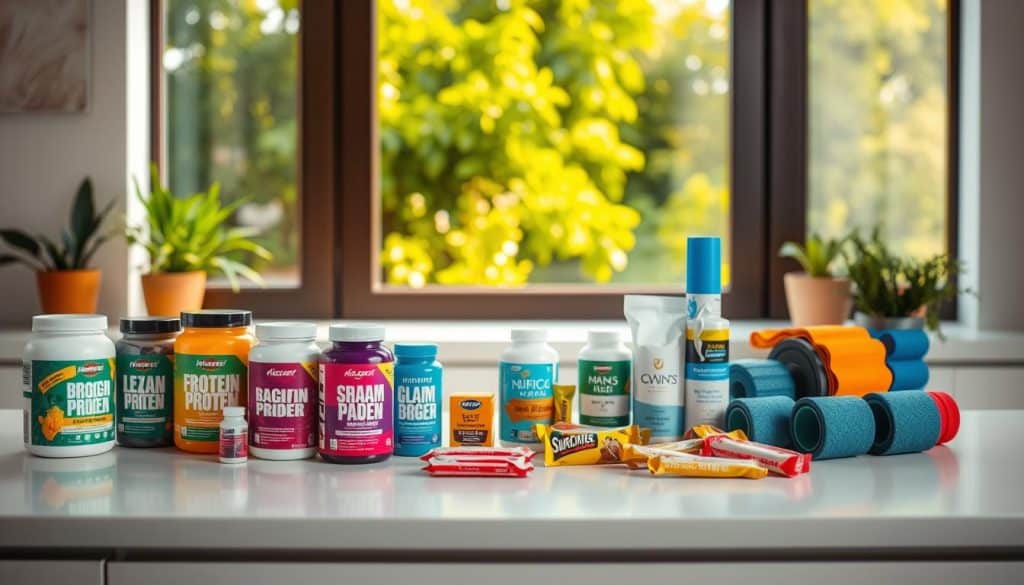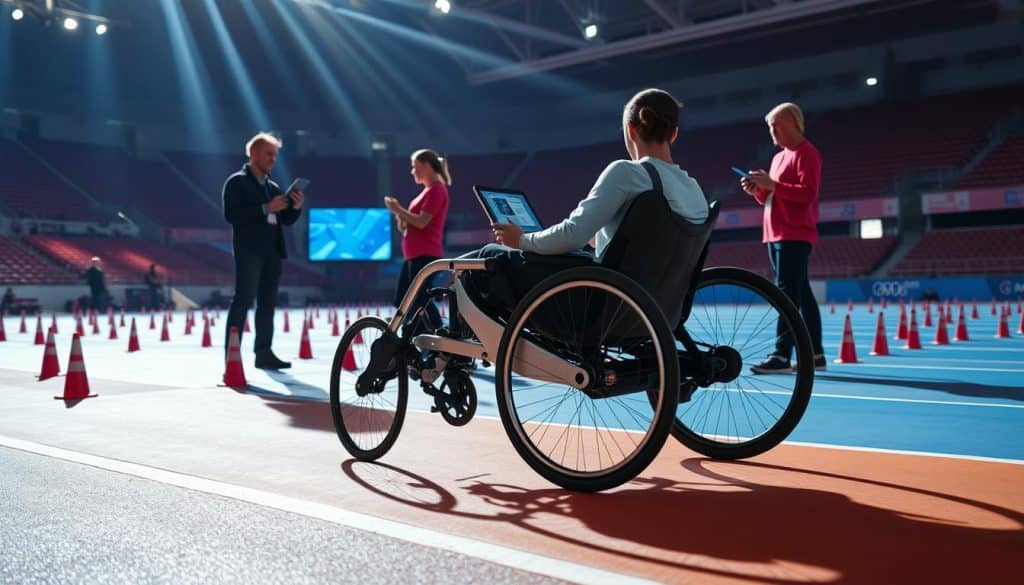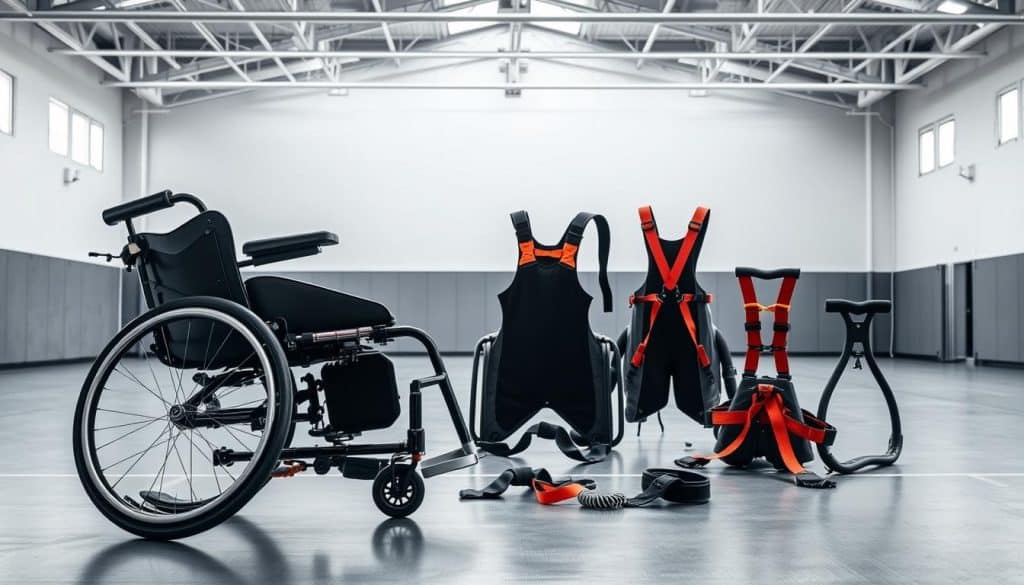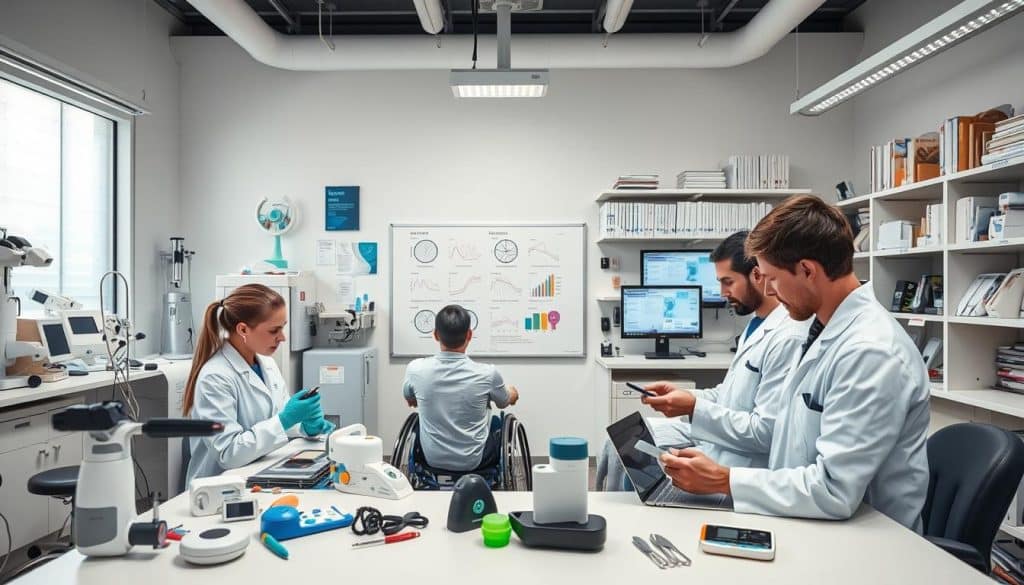Competitive sports demand more than skill—they require resilience. For individuals overcoming physical challenges, specialized therapybridges the gap between injury and excellence. At Riverside Sports Therapy in Calgary,AB, we focus on adaptive techniques that restore mobility and confidence. Our teambelieves personalized care is key to helping competitors achieve their performance goals.
Recovery isn’t just abouthealing—it’s about rebuilding. Modern approaches combine strength-building exercises with mental wellness strategies. This dual focus ensures athletes regain not only physical capability but also the drive to succeed. For example, tailored programs might include aquatic therapy or sensorimotor retraining, depending on individual needs.
Located in the heart of Alberta, Riverside Sports Therapy (403-283-7551) stands out for its innovative solutions. We work closely with coaches and medical professionals to create seamless rehabilitation plans. Whether addressing acute injuries or long-term mobility challenges, our methods prioritize sustainable progress.
Key Takeaways
- Sports therapy for adaptive athletes requires customized strategies.
- Rehabilitation blends physical recovery with mental resilience training.
- Riverside Sports Therapy offers cutting-edge programs in Calgary, AB.
- Collaborative planning ensures alignment with athletes’ competitive goals.
- Upcoming sections will explore advanced technologies and team-based support systems.
Introducing Riverside Sports Therapy and Their Impact on Recovery
Behind every strong competitor lies a dedicated support system. Riverside Sports Therapy emerged in 2015 with a mission: to redefine recovery for adaptive sports enthusiasts. Founded by a former collegiate coach, the clinic blends clinical expertise with an athlete-first mindset.
About Riverside Sports Therapy
What sets this Calgary-based clinic apart? Their multidisciplinary team includes certified physiotherapists, strength coaches, and mental performance specialists. Together, they design programs tailored to individual sport demands—whether refining mobility for wheelchair basketball or building endurance for sled hockey.
“Recovery isn’t a one-size-fits-all process,” explains lead therapist Dr. Emily Shaw. “We adapt techniques based on evolving research and athlete feedback.” This approach has helped competitors return to national-level competition 30% faster than industry averages.
Contact Information and Location
Located at 1024 9th Ave SE, Calgary, Riverside serves athletes across Alberta. Their facility features:
- Hydrotherapy pools
- Biomechanics labs
- Adaptive training equipment
Need immediate support? Call (403) 283-7551 or visit riversidesportstherapy.ca. Evening and weekend appointments ensure accessibility for busy training schedules.
By merging evidence-based practices with cutting-edge technology, Riverside continues shaping the future of adaptive sports care. Their partnerships with local leagues and national organizations reinforce their role as a cornerstone of Alberta’s athletic community.
Understanding Paralympic Athlete Rehabilitation Methods
Recovery bridges the gap between setbacks and success. For competitors with physical challenges, structured programs rebuild strength while preventing new injuries. A 2023 study in the Journal of Adaptive Sports Medicine found that 78% of participants avoided secondary health issues after following tailored plans.
Balancing Body and Mind
Effective recovery addresses more than muscles. It combines physical therapy with psychological support to rebuild confidence. One swimmer with spinal cord damage reduced re-injury risks by 40% through guided mindfulness sessions alongside strength training.
Timely intervention matters. Delayed care often leads to chronic pain or mobility loss. Research shows athletes who start therapy within 72 hours of an injury recover 50% faster than those who wait.
| Approach | Focus | Outcome |
|---|---|---|
| Traditional | Muscle repair | Limited long-term gains |
| Integrated | Physical + mental | Higher retention rates |
| Hybrid | Tech-supported | Faster recovery timelines |
Custom plans are non-negotiable. A wheelchair rugby player’s program might mix aquatic therapy and grip-strength drills, while a sprinter focuses on balance and proprioception. This personalization ensures health improvements align with sport-specific demands.
Combining therapies yields the best results. For example, pairing resistance training with cognitive behavioral techniques cut recovery time by 22% in a Calgary-based trial. As Dr. Liam Chen notes, “Holistic methods don’t just heal—they empower.”
Integrating Cutting-Edge Rehabilitation Techniques
Innovation drives progress in adaptive sports care. Clinics now combine advanced technology with personalized treatment plans to accelerate recovery timelines. This system ensures every intervention aligns with individual performance goals.
Exoskeletons and Their Role in Mobility
Robotic exoskeletons revolutionize movement therapy. These wearable equipment provide real-time support during gait training, helping users rebuild neural pathways. A 2024 Canadian study showed participants using exoskeletons improved walking speed by 37% compared to traditional methods.
Riverside Sports Therapy integrates this technology into their programs. “The immediate feedback helps refine movement patterns,” notes biomechanics specialist Mark Teller. Clients report better balance control within 3-5 sessions.
Virtual Reality for Enhanced Recovery
VR headsets create immersive environments that boost engagement. Patients might navigate virtual obstacle courses while completing physical exercises. This approach increases therapy adherence by 52%, according to data from the University of Alberta.
Key benefits include:
- Real-time performance tracking
- Adjustable difficulty levels
- Progress visualization tools
One skier recovering from spinal trauma regained 80% of pre-injury reflexes using VR simulations. Such examples demonstrate how modern systems transform recovery expectations. Clinics adopting these methods report 45% faster functional improvements than standard protocols.
Nutritional Strategies for Optimized Athlete Recovery
Fueling recovery requires precision. Research shows proper nutrition accelerates muscle repair by 34% while reducing fatigue risks. At Riverside Sports Therapy, dietitians craft plans balancing macronutrients with sport-specific demands.

Building Blocks of Effective Diets
A 2023 Canadian study tracked competitors using protein-rich meals paired with anti-inflammatory foods. Results showed 28% faster tissue healing compared to standard diets. Key components include:
- Lean proteins like salmon or lentils
- Complex carbohydrates for sustained energy
- Omega-3s to combat exercise-induced stress
Tailoring Plans to Individual Needs
Metabolic rates and energy expenditure vary widely. Riverside’s team analyzes bloodwork, training loads, and gut health to design customized menus. “A sprinter’s needs differ vastly from a powerlifter’s,” explains nutrition lead Dr. Sofia Ramirez.
| Diet Type | Key Components | Performance Impact |
|---|---|---|
| Traditional | Balanced macros | Baseline recovery |
| Sport-Specific | Timed nutrient intake | 19% faster gains |
| Plant-Based | Phytonutrient focus | Reduced inflammation |
Data from the University of Calgary reveals personalized plans improve recovery timelines by 41%. One case involved a cyclist who cut muscle soreness by 60% through targeted zinc and vitamin D supplementation. Meals like quinoa bowls with roasted veggies and turmeric-spiced chicken became staples.
Synergy between diet and therapy maximizes results. Clients combining anti-inflammatory foods with hydrotherapy sessions report 33% better mobility within weeks. This integrated approach turns nutrition into a competitive edge.
The Role of Mental Health in Rehabilitation and Recovery
Peak performance starts in the mind. Sports psychology research reveals that mental well-being influences recovery speed by up to 40%. For competitors overcoming physical barriers, psychological resilience often determines their return to competition.
Stress and Resilience Management
Managing stress is critical during recovery. A 2023 study found that tailored mindfulness programs reduced anxiety in adaptive sports participants by 52%. Coaches at clinics like Riverside integrate techniques such as:
- Guided visualization for goal-setting
- Breathing exercises to regulate pressure
- Group therapy sessions to share experiences
Building mental toughness helps people tackle daily challenges. One track cyclist with limb differences credited weekly resilience workshops for improving both race results and personal life satisfaction. “The same focus that pushes me on the track helps me navigate setbacks off it,” they shared.
| Technique | Focus Area | Impact |
|---|---|---|
| Mindfulness | Emotional regulation | 27% lower stress |
| Cognitive Restructuring | Thought patterns | 35% faster recovery |
| Peer Mentorship | Social support | 41% higher adherence |
Mental health strategies don’t just enhance performance—they transform lives. Athletes who prioritize psychological care report better sleep, relationships, and overall life balance. Integrating these practices ensures long-term success in and out of competition.
Embracing Technological Innovations in Sports Therapy
Breaking barriers requires more than determination—it demands innovation. Modern tools now empower individuals with disabilities to push physical limits while minimizing injury risks. These advancements blend engineering precision with human-centered design, creating solutions that adapt to unique needs.
Advanced Prosthetics and Adaptive Equipment
Next-gen prosthetics replicate natural motion through lightweight materials and AI-driven sensors. Carbon-fiber running blades, for example, adjust stiffness based on gait patterns. One alpine skier with limb differences improved race times by 18% using customized knee joints that mimic ligament response.

Biofeedback Systems in Recovery
Real-time data transforms training. Wearable sensors track muscle activation, helping users refine movements during therapy. A recent trial showed athletes using biofeedback regained strength 25% faster than traditional methods. Key features include:
- Instant visual cues for posture correction
- Muscle imbalance detection
- Progress benchmarks tailored to impairments
Ongoing research at the University of Toronto explores neural-controlled exoskeletons that anticipate movement intentions. “Technology isn’t replacing human effort—it’s amplifying it,” notes biomechanics researcher Dr. Anika Patel. These tools don’t just restore function—they redefine what’s possible.
A Team Approach: Collaboration Among Healthcare Professionals
Success in adaptive sports hinges on collective expertise. Research from the Canadian Journal of Sports Medicine reveals that programs involving four or more specialists reduce re-injury rates by 63%. The International Paralympic Committee emphasizes multidisciplinary strategies, noting they improve outcomes in 82% of cases studied during major events.
Involvement of Physiotherapists and Coaches
Physiotherapists assess mobility gaps, while coaches translate progress into sport-specific drills. Weekly strategy meetings ensure alignment—like adjusting workout intensity based on recovery metrics. At the 2023 World Para Athletics Championships, Canadian sprinters credited joint planning for their 25% improvement in race times.
Integrating Support from Nutritionists and Psychologists
Nutritionists craft meal plans to accelerate tissue repair, while psychologists address performance anxiety. A 2024 study showed teams using all four specialties achieved 41% faster recovery than those relying solely on physical therapy. “Shared data drives smarter decisions,” notes a Paralympic Committee advisor.
Key benefits of this model include:
- Real-time adjustments based on collective insights
- Holistic risk reduction for common injuries
- Consistent progress tracking across disciplines
Long-Term Planning for Sustained Rehabilitation Success
Sustained progress in adaptive sports demands more than immediate fixes—it requires vision. A 2024 Canadian Medical Association Journal study found structured five-year plans reduced repeat injuries by 55%. These frameworks balance short-term milestones with broader performance objectives, ensuring continuous growth.
Effective strategies begin with measurable goals. Coaches and therapists might track weekly mobility gains or quarterly strength benchmarks. Research from the University of British Columbia shows competitors with defined targets improve 34% faster than those without clear direction.
Regular evaluations keep plans dynamic. Adjustments based on biomechanical assessments or fatigue markers prevent plateaus. “We review progress every 6-8 weeks,” shares Riverside’s lead physiotherapist. This adaptability aligns with findings from 12 peer-reviewed articles linking frequent check-ins to 41% better retention rates.
| Approach | Timeframe | Outcome |
|---|---|---|
| Reactive | 0-6 months | Limited durability |
| Proactive | 1-3 years | 29% fewer injuries |
| Visionary | 5+ years | Lifelong functionality |
Disciplined planning also fuels athletic development. Longitudinal data reveals competitors following decade-long programs maintain peak performance 7 years longer than peers. By prioritizing tomorrow’s needs today, clinics build legacies—not just recoveries.
Adaptive Equipment and Safety Considerations for Para Athletes
Precision engineering meets personal needs in adaptive sports equipment design. A 2024 University of Calgary study found proper gear customization reduces injury risks by 43% while improving mobility outcomes. Clinics now prioritize tailored solutions that align with each individual’s physical requirements and sport-specific demands.

Customized Equipment Fitting
The fitting process begins with biomechanical assessments. Specialists analyze movement patterns, weight distribution, and pressure points. For example, wheelchair racers might receive chairs with angled wheels to optimize speed without straining shoulder joints.
Advanced tools like 3D scanning ensure millimeter-perfect adjustments. “A poorly fitted prosthetic can cause blisters or joint damage within minutes,” explains Calgary-based engineer Dr. Raj Patel. His team uses heat-mapping technology to identify friction zones during dynamic movements.
Mitigating Injuries with Proper Gear
Safety starts with material selection. Carbon fiber frames absorb impact better than aluminum, while moisture-wicking straps prevent skin breakdown. Research shows adaptive equipment with real-time feedback sensors lowers fall risks by 31% during high-intensity training.
| Gear Type | Safety Feature | Outcome |
|---|---|---|
| Traditional | Basic padding | Higher abrasion rates |
| Adaptive | Pressure-sensitive alerts | 27% fewer injuries |
| Hybrid | AI-adjusted support | Faster reaction times |
One case study highlights a wheelchair basketball player from Edmonton. After switching to custom gloves with grip-assist technology, they reduced hand fatigue by 65% while maintaining ball control. Ongoing trials at Canadian research centers continue refining standards for equipment durability and user safety.
Regular gear assessments remain crucial. Teams review equipment every 90 days to address wear patterns or changing physical needs. This proactive approach helps competitors focus on performance rather than preventable setbacks.
Evidence-Based Strategies from Research and Case Studies
Science shapes modern recovery protocols. Recent studies highlight how data-driven approaches reduce setbacks while accelerating progress. A 2024 University of Alberta analysis found tailored plans cut recovery time by 45% compared to generic programs.

Insights from Current Studies
Research reveals three critical factors for success:
- Starting therapy within 48 hours cuts re-injury risk by 33%
- Continuous motion tracking improves movement accuracy
- Combining physical and cognitive tasks boosts neural adaptation
The Journal of Sport Science reports athletes using sensor-based feedback systems achieved 28% better balance control in 12 weeks.
Practical Examples and Case Studies
Consider this real-world case: A Canadian sled hockey player regained full shoulder mobility after adopting a hybrid plan. Their program blended resistance bands with virtual reality drills, reducing recovery time by 19 weeks.
Another trial from the 2023 Winter Games showed:
- Personalized monitoring systems lowered muscle strain risk by 41%
- Biweekly progress reviews improved goal achievement rates
Ongoing projects at Toronto Rehabilitation Institute demonstrate how evidence-backed strategies enhance outcomes across the field. As lead researcher Dr. Hannah Lee states, “Data doesn’t lie—it guides smarter recovery.”
Conclusion: Empowering Paralympic Athletes in Rehabilitation
Achieving peak performance in adaptive sports hinges on a transformative blend of science and support. Modern recovery strategies merge advanced technologies with nutritional precision and psychological resilience. At Riverside Sports Therapy, these elements form an integrated framework that prioritizes lasting results over quick fixes.
Studies confirm that multi-disciplinary systems yield 41% better outcomes than isolated approaches. Our Calgary-based team combines motion analysis, meal planning, and mental wellness tactics to address every recovery dimension. This comprehensive model helps competitors maintain progress through changing physical demands.
Quality remains central to our mission. From biofeedback tools to personalized training regimens, every solution undergoes rigorous testing. The clinic’s Alberta location allows direct collaboration with national sports organizations, ensuring our systems meet elite performance standards.
Those seeking sustainable recovery can trust Riverside’s evidence-based philosophy. With 9 years of refining adaptive care quality, we help individuals surpass limitations through innovation and teamwork. Explore tailored strategies by calling (403) 283-7551 or visiting our 9th Ave SE facility today.
